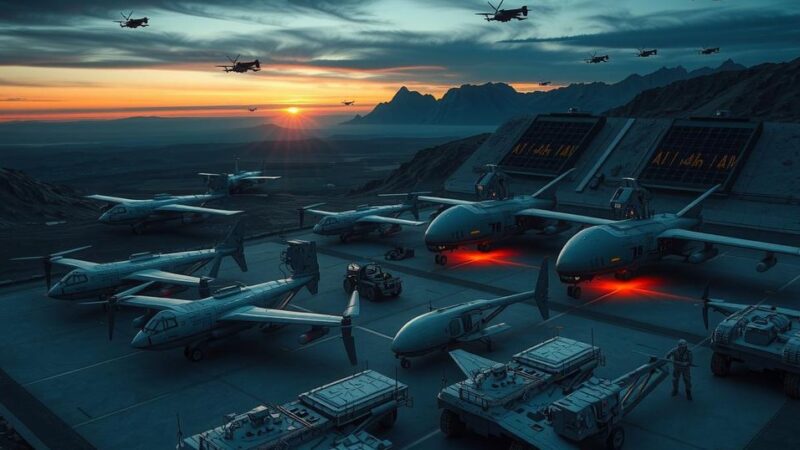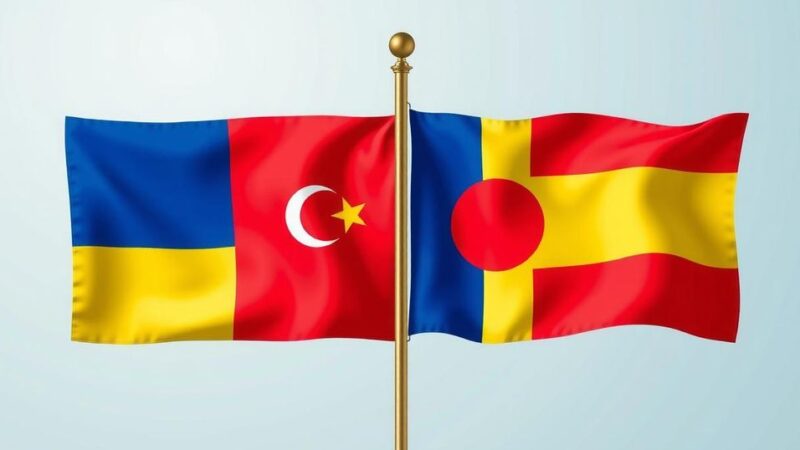Ukrainian drone operators reportedly damaged three North Korean M1989 howitzers in a strike coordinated before March 18, utilizing HIMARS systems. Despite sustaining losses, Ukrainian forces continue to engage their adversaries in the Kursk region, illustrating the high casualty rates and equipment losses suffered by both Russian and North Korean troops. The evolving conflict highlights the significant impact of advanced military technology.
Forbes reports that the Ukrainian 14th Regiment of Unmanned Aerial Systems has potentially damaged three North Korean M1989 howitzers in a synchronized strike, which occurred on or before March 18. Drone operators detected the 170-millimeter artillery hidden within the treelines of the Kursk Oblast in western Russia, subsequently relaying the coordinates to a Ukrainian battery armed with High-Mobility Artillery Rocket Systems (HIMARS). The battery deployed at least one M30 rocket that detonated above the treetops, dispersing numerous submunitions onto the M1989s and their crews. While the damage’s extent remains inconclusive, the incident highlights the ongoing conflict’s ramifications.
The M1989 Koksan is a significant 40-ton self-propelled artillery piece from North Korea, introduced during a parade in 1989. The piece is notable for its 170-mm caliber, allowing for expansive range; conventional rounds can reach distances of up to 40 kilometers, while advanced rounds can extend this to approximately 60 kilometers. Forbes further states that North Korea has provisioned Moscow with a variety of military vehicles, including M1989s, missile vehicles, rocket launchers, and air defense systems.
Prior to the recent strike, Ukrainian forces had already damaged one M1989 and several Bulsae-4 anti-tank launchers, while a mishap also caused a Russian operator to mistakenly destroy a North Korean air defense system. A substantial Ukrainian contingent was engaged in Kursk up until last week when the Rubicon Center of Advanced Unmanned Systems executed a successful strike on their primary supply line in Sudzha. Concurrently, North Korean troops advanced in the region, intensifying pressure on Ukrainian forces, who ultimately retreated but left behind crucial equipment. Despite these challenges, Ukrainian drones and artillery remain active in targeting Russian and North Korean units in the vicinity.
Forbes describes the fighting in Kursk as a Pyrrhic victory for Russian and North Korean forces, inflicting tens of thousands of casualties and the loss of numerous vehicles while compelling a Ukrainian withdrawal. While Ukrainian losses were substantial, they were comparatively less severe. The conflict continues to evolve, affecting negotiations and tactical approaches on both sides of the battlefield.
In conclusion, the recent Ukrainian strike on North Korean M1989 howitzers exemplifies the complexities of the ongoing conflict in the region. Despite suffering a strategic retreat, Ukrainian forces persist in targeting enemy positions through aerial and artillery strikes. The developments in Kursk underline the significant losses faced by both Russian and North Korean forces, while emphasizing the role of advanced military systems like HIMARS in modern warfare. The situation remains fluid as both sides adjust their tactics moving forward.
Original Source: euromaidanpress.com






